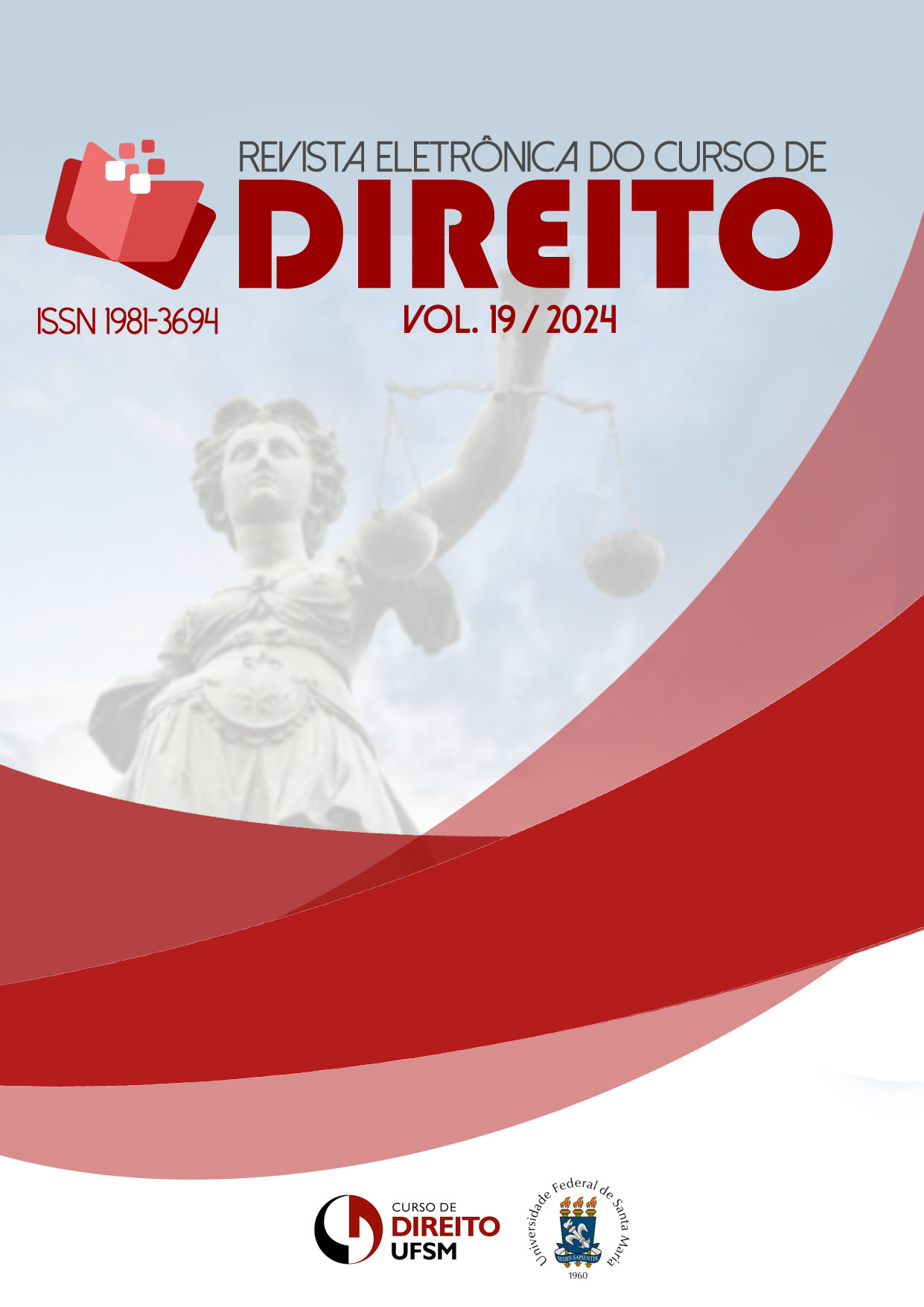Deep fake, personality rights and criminal law: an analysis of technological impacts in the digital age
DOI:
https://doi.org/10.5902/1981369485239Keywords:
Deep Fake, Personality Rights, Criminal Law, Technology, Privacy, EthicsAbstract
Technology has brought significant changes to society, and one of these innovations, known as Deep Fake, is highlighted in contemporary discussions. This article aims to analyze the impacts of Deep Fake technology in the context of personality rights and Criminal Law. With the advent of the digital era, the creation of hyper-realistic synthetic videos and audio has raised ethical, legal and social questions. In this scenario, it is essential to understand how Deep Fake technology affects fundamental rights, such as people's privacy, image and reputation, as well as how Criminal Law deals with this phenomenon. The study will address the concepts and evolution of Deep Fake technology, examining emblematic cases of its misuse. Furthermore, it will investigate the implications for personality rights, highlighting the need to adapt Criminal Law to face this new threat. The methodology used was hypothetical-deductive, through the theoretical-bibliographic method, with data collection carried out on academic search websites, libraries and scientific journals that address the topic. Finally, the article will propose recommendations and solutions to protect individuals against the abuse of Deep Fake technology and guarantee the preservation of personality rights in the digital age.
Downloads
References
ALMEIDA, F.C. Deepfake: tecnologia permite colocar rosto e voz em outro corpo.Jul. 2020. Disponível em: https://vejasp.abril.com.br/cultura-lazer/deepfake-tecnologia-permite-copiar-o-rosto-expressao-e-a-voz/. Acesso em: 15 ago. 2021.
ÁVILA,G. N.; CORAZZA, T. A. M. . A Hiperexposição pessoal e seus reflexos nos direitos da personalidade: necessidade de uma tutela transversal do direito à privacidade, com enfoque no âmbito penal. JurisPoiesis,v. 25, p. 144-177, 2022.
ÁVILA, G. N.; CORAZZA,T. A. M. A hiperexposição pessoale o direito ao esquecimento e àextimidade. http://dx.doi.org/10.26668/IndexLawJournals/2526-0200/2022.v8i1.8627, v. 1, p. 22-42, 2022.Acesso em: 15 ago. 2021.
BARBOSA, F.M. Estudo, desenvolvimento e comparação de técnicas de detecção de Deepfake. Monografia (Bacharelado em Ciência da Computação). Universidade Federal do Maranhão. São Luís, 2018.
BRASIL. Lei 12.965 de 23 de abril de 2014. Estabelece princípios, garantias, direitos e deveres para o uso da Internet no Brasil. In: Diário Oficial da República Federativa do Brasil, Brasília, DF, 23 abr. 2014. Disponível em: http://www.planalto.gov.br/ccivil_03/_ato2011-2014/2014/lei/l12965.htm. Acesso em: 19 set. 2023.
BRASIL. Lei Nº 2.848, de 7 de dezembro de 1940. Institui o Código Penal. Disponível em: http://www.planalto.gov.br/ccivil_03/decreto-lei/del2848compilado.htm. Acesso em: 20 set. 2023.
BRASIL, D. R.; Bento, L. A. (2023). O direito fundamental à privacidade no contexto da LeiGeral de Proteção de Dados. Revista De Direito ContemporâneoUNIDEP,1(2), 7–24. Recuperado de https://periodicos.unidep.edu.br/rdc-u/article/view/162. Acesso em: 20 Set. 2023.
FIDELIS, V. C. ;SOARES, D.V.Os desafios do ordenamento jurídico brasileiro frente às deepfakes. Revista Pensamento Jurídico, São Paulo, Brasil, v. 17, n. 1, 2023. Disponível em: https://ojs.unialfa.com.br/index.php/pensamentojuridico/article/view/711. Acesso em: 22 set.2023
CRUZ, M. A. R. C.; CAMARGO, L.H. K.O direito fundamental à proteção de dados pessoais e as condições de precedência em três medidas não farmacológicas adotadas pelo brasil no enfrentamento da Covid-19. Revista Eletrônicado Curso de Direito da UFSM, Santa Maria, RS, v. 16, n. 1, e48479, jan./abr. 2021. ISSN 1981-3694. DOI: http://dx.doi.org/10.5902/1981369448479. Disponível em: https://periodicos.ufsm.br/revistadireito/article/view/48479Acesso em: 24 Set. 2023.
LIMA, R.Deepfake: o que é e como funciona?2020. Disponível em: https://www.tecmundo.com.br/internet/206706-deepfake-funciona.htmAcesso em: 20 set. 2023.
LOPES, A. ‘Deepfake’, o novo e terrível patamar das ‘fake news’. Jan. 2021. Disponível em: https://veja.abril.com.br/tecnologia/deepfake-o-novo-e-terrivel-patamar-das-fake-newsAcesso em: 18 set. 2023.
LUCENDO, G.A.A longa história das notícias falsas. Disponível em: https://brasil.elpais.com/brasil/2018/06/08/cultura/1528467298_389944.html. Acesso em: 19 set. 2023.
NUNES, D. J. C. ; ANDRADE, O. M. O uso da inteligência artificial explicável enquanto ferramenta para compreender decisões automatizadas: possível caminho para aumentar a legitimidade e confiabilidade dos modelos algorítmicos? Revista Eletrônica do Curso de Direito da UFSM, Santa Maria, RS, v. 18, n. 1, e69329, 2023. ISSN 1981-3694. DOI: http://dx.doi.org/10.5902/1981369469329. Disponível em: https://periodicos.ufsm.br/revistadireito/article/view/69329Acesso em: 25 Set. 2023.
ROSA, J.L. G.Fundamentos da Inteligência Artificial. Rio de Janeiro: LTC, 2011, p. 3.
SIQUEIRA, D. P. ; VIEIRA, A.L. S. F.Os limites à reconstrução digital da imagem na sociedade tecnológica. Revista Eletrônica do Curso de Direito da UFSM, Santa Maria, RS, v. 17, n. 3, e67299, set./dez. 2022. ISSN 1981-3694. DOI: http://dx.doi.org/10.5902/1981369467299. Disponível em: https://periodicos.ufsm.br/revistadireito/article/view/67299Acesso em: 25 Set. 2023.
TEFFÉ, C.A. S.Considerações sobre a proteção do direito à imagem na internet. Revista de Informação Legislativa: RIL, v. 54, n. 213, p. 173-198, jan./ mar. 2017. Disponível em: http://www12.senado.leg.br/ril/edicoes/54/213/ril_v54_ n213_p173. Acesso em: 25 Set. 2023.
Downloads
Published
How to Cite
Issue
Section
License

This work is licensed under a Creative Commons Attribution-NonCommercial-NoDerivatives 4.0 International License.

Este obra está licenciado com uma Licença Creative Commons Atribuição-NãoComercial-SemDerivações 4.0 Internacional.








